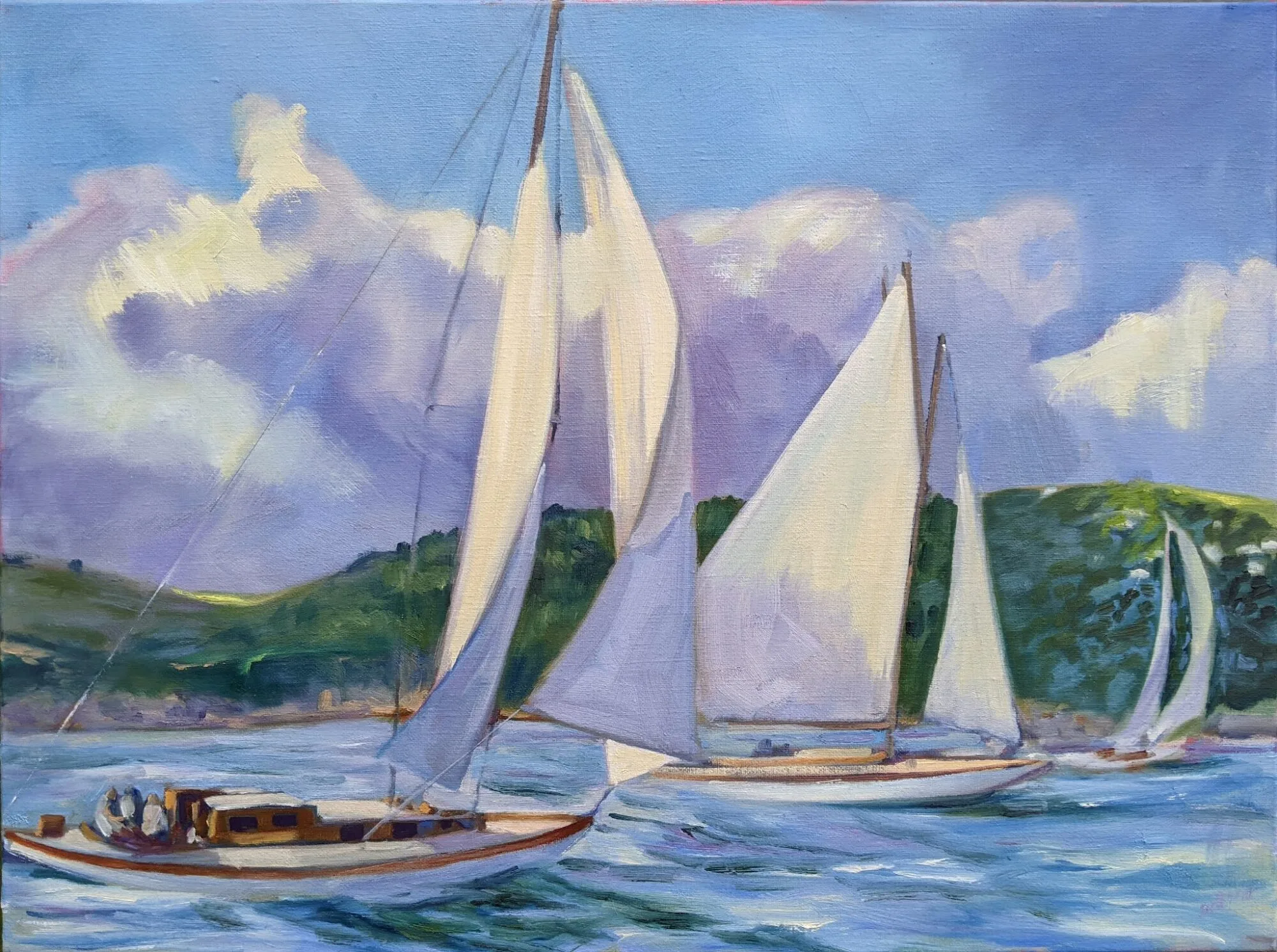If you don’t engage with your subject, you’ll waste time if you paint it.
| This year we have a service dog with us. He could make anyone happy. (Photo by Jennifer Johnson) |
I started this year’s workshop with an exercise I haven’t done in years. I took the protocols I published the last two Mondays (hereand here) and had my students execute them in two groups. Each team member took turns doing a step of the process. Together they brought a painting from initial design to finished product.
Process is everything in painting. Being involved, rather than just watching, makes it stick in the mind.
 |
| The oil painting group work on their painting. (Photo by Jennifer Johnson) |
An hour in, I asked myself, “What have I done?” In the end, my misgivings were ungrounded. Yes, the students learned my process. More importantly, the exercise took away their performance anxiety. They leapfrogged right over the usual bad first painting.
Unfortunately, we can’t always have group exercises to loosen up. We need other strategies to help us focus. One of the most important—to me—is to work at the same time every day. That tells my body and brain when to get serious.
 |
| The watercolor group faithfully executed every step I assigned to them. |
Another technique I’ve recently adopted is to sit quietly with a view for several minutes and gauge my reaction. I’ve realized there are scenes which irritate or bore me. They may be iconic, beautiful and lovely, but I’ll be fighting my reaction all the way. There are other scenes which touch a deep wellspring of positive feeling. And there are places where my reaction is simply disinterested. The trick is to give myself enough time to understand these reactions, instead of relying on my logical mind to determine what will make a good painting. Or even worse, a ‘sellable’ painting.
 |
| Rhea Zweifler relaxing into her drawing. (Photo by Jennifer Johnson) |
This is not a geographical issue. Every place I’ve ever been is multifaceted. I’ve painted lovely landscapes in Terre Haute, Indiana, which is flat farmland bisected by the muddy Wabash River. And I’ve painted absolute gibberish in famous beauty spots.
Yesterday, one student ended up wiping out her afternoon painting. “I set up here and thought, ‘I guess I’ll paint that scene over there.’ But I wasn’t really interested. I should have walked around more and found something that I really loved.” She was irritated by her choice and never fully engaged with the painting. Had she recognized that at the start, she would have saved herself a lot of work.
That’s another way preparatory sketches are helpful. We hate abandoning projects we’ve started. However, if your sketch isn’t dynamic and powerful, you need to stop and figure out why. It could be a composition problem, but it’s equally likely that you don’t really like the view as much as you think you ought.
 |
| Into each workshop an obligatory lecture/demo must fall. |
I have—too many times—slogged through a painting for three or four hours only to turn around and ask myself, “why didn’t I paint that?” A little quiet reflection at the start of my process would have saved me a lot of wasted time.
It’s far easier to paint something your heart responds to, rather than something that bores or annoys you. If it’s the right scene, you’ll get lost in your work, forgetting time. If it’s not, you’ll spend most of the session wishing you were done. The only way to know which you’ve got is to sit quietly and let it speak to you.
Is this rational? No. Is it true? Absolutely.
